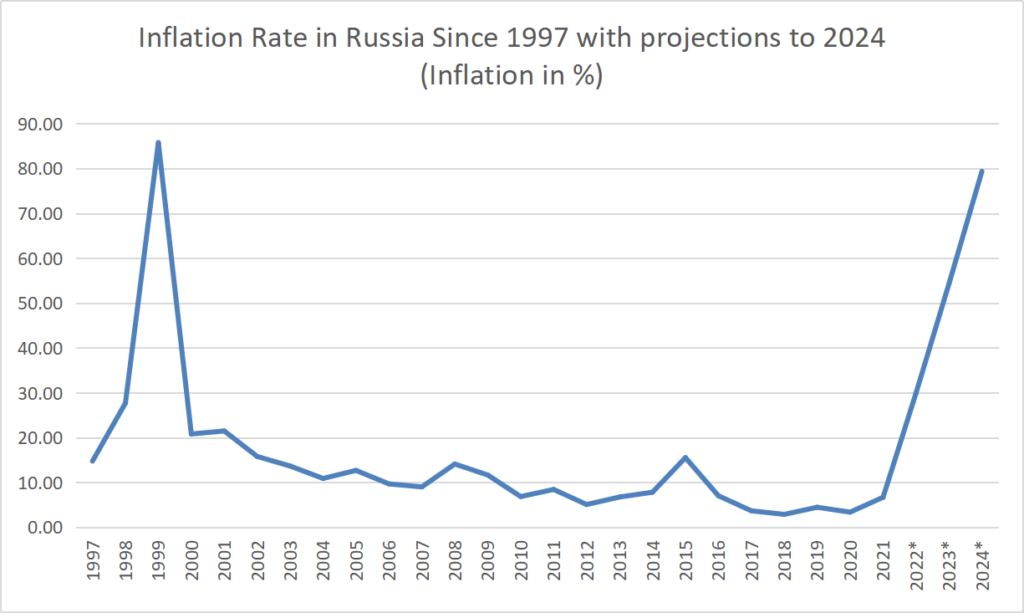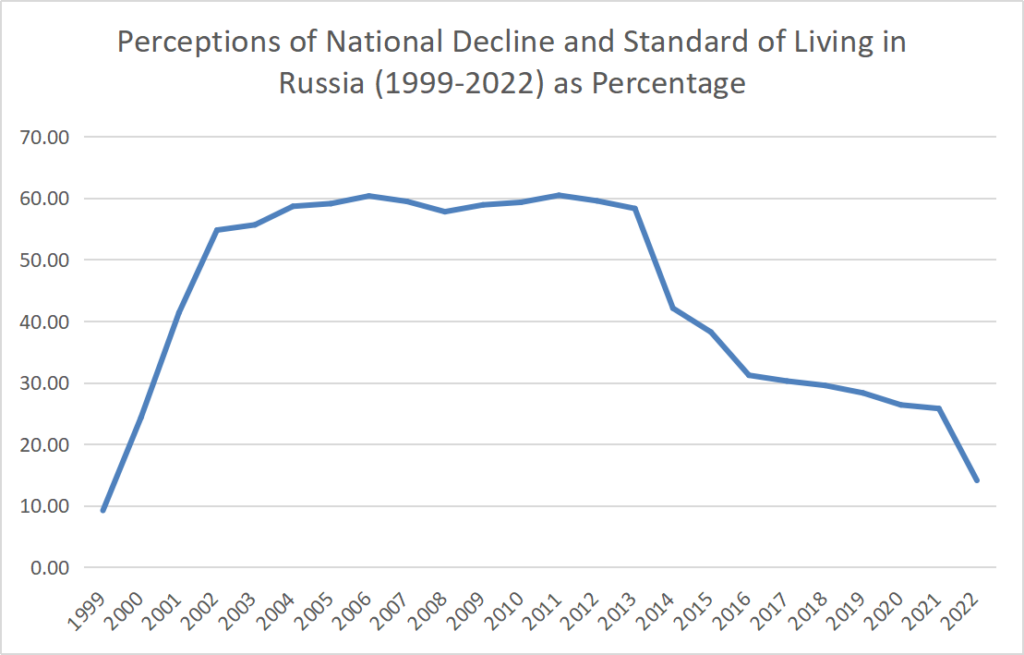Economic experts from the IMF are projecting from the continuation of the Special Military Operation in Ukraine and resulting sanctions inflation levels are on course to reach pre-2000s highs.

The statistic shows the inflation rate in Russia from 1997 to the beginning of 2022, with projections up until 2024. The inflation rate is calculated using the price increase of a defined product basket. This product basket contains products and services, on which the average consumer spends money throughout the year. They include expenses for groceries, clothes, rent, power, telecommunications, recreational activities and raw materials (e.g. gas, oil), as well as federal fees and taxes. In 2021, the average inflation rate in Russia was at about 6.69 percent compared to the previous year and is expected to reach 29.92 percent in 2022 and keep rising.
Russia’s economic uplift:
Based on economic power and economic standards, Russia is recognized as one of the biggest economic powers in the world. With a population of around 143 million people and a re-awakened population growth since 2010, Russia has tried to establish itself as one the world’s largest economies and wealthiest nations and succeeded, being the sixth largest economy in the world today. The gross domestic product (GDP) increase in Russia from 2009 to 2014 is also a good indicator of Russia’s economic growth and strength. After the 1998 Russian financial crisis, several reforms were introduced to the Russian economy which allowed it to recover. Not only did the Russian economy experience a great boost but the quality of life in Russia as well as the people’s satisfaction with the direction of the country had also improved.
At the very onset of the Special Military Operation (Russia’s invasion of Ukraine), inflation levels and thus citizen quality and satisfaction with life is expected to again plummet. Quality of life has already been on a downturn under Putin’s presidency as can be seen in sure decline in the chart below.

We need better policies to fuel our economic growth and citizen quality of life. We need Soviet era policies to again fuel this change.